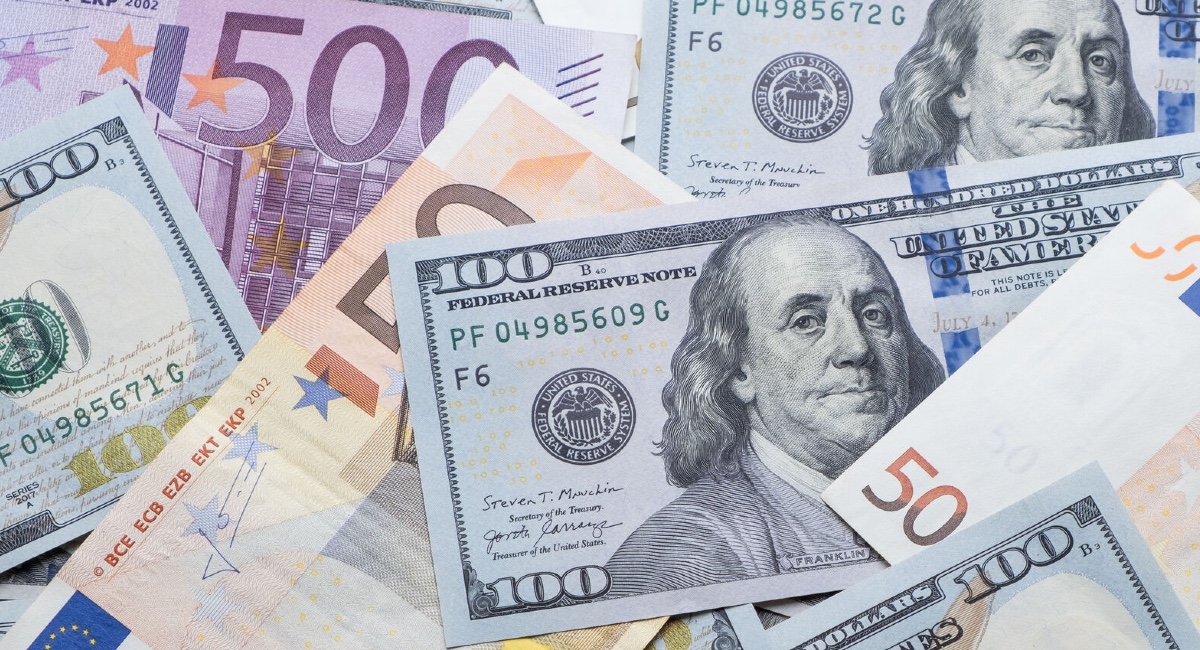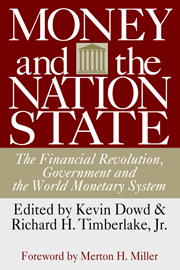Nobel economics laureate Robert Mundell wrote in 1998 that the dollar-euro exchange rate would go on to become “the most important price in the world.” Mundell, who was known as the father of the euro, was exactly right. Since the euro was introduced in the following year, the dollar-euro has been, by volume of transactions, far and away the most important currency pair. It has also fluctuated wildly—reaching 84 U.S. cents per euro in 2000 and $1.59 in 2008. Today, it’s at parity—a rate that hasn’t been seen for 20 years.
The exchange rates of major currencies haven’t always been so volatile. The Bretton Woods Agreement of 1944 ushered in a system of international exchange-rate fixity and stability. A golden age of record-setting performances among the world’s advanced capitalist countries ensued. But that global monetary system was scrapped 29 years later by the unilateral action of the Nixon administration. What followed was an era of flexible, unstable exchange rates—what the great French economist Jacques de Larosière terms an “anti-system”—in which the advanced economies experienced a dramatic growth slowdown and a sharp acceleration of inflation.
That anti-system creates problems. Banking crises, soaring inflation, sovereign-debt defaults, and economic booms and busts all find a common source in currency instability. Each of these ills inspires calls for policy changes—many of which threaten free societies. Karl Schiller, Germany’s finance minister from 1966 to 1972, captured the point well when he observed that “stability is not everything, but without stability, everything is nothing.”
Today, dollar-euro parity is inflicting a great deal of strain on the international anti-system. When the dollar strengthens, untethered emerging-market currencies don’t float on a sea of tranquility. They sink like stones. Since January 2020, I have recorded 20 emerging-market currencies that have lost more than 20% of their value relative to the dollar. Eight of those countries—Argentina, Cuba, Lebanon, Sudan, Syria, Turkey, Venezuela and Zimbabwe—have seen more than 65% of their currencies’ value against the dollar evaporate.
As these currencies lose value, inflation rates surge. Money that emerging-market countries borrowed at “low” interest rates in U.S. dollars becomes a growing mountain of debt. If that isn’t bad enough, foreign investors, in an attempt to escape the ravages of depreciating currencies, run for the hills. That’s exactly what’s happened; for a record five consecutive months, investors have pulled funds out of emerging markets.
How can we restore stability for the dollar and the euro? The U.S. and European Union should enter a formal agreement that specifies a zone of stability—say, $1.20 to 1.40 per euro. When the dollar is weak, the European Central Bank would be obliged to defend the zone of stability by purchasing dollars. Likewise, the U.S. Treasury would be obliged to defend a weak euro by purchasing euros.
The center would find stability again. But what about the periphery?
Most emerging markets’ central banks produce unstable currencies and prices, which create inflation. The answer, then, is that each of these banks—perhaps a hundred of them, from Albania to Zambia—should be mothballed and put in museums. They should be replaced by currency boards, like that in Hong Kong. Under such an arrangement, a currency board would issue a domestic currency that would trade freely at a fixed exchange rate with an anchor—either the U.S. dollar or the euro. It would be fully backed by anchor currency reserves, and the locally issued currency would be a clone of its anchor.
The periphery, in other words, would no longer exist—and currency stability would prevail. Long live stability.










